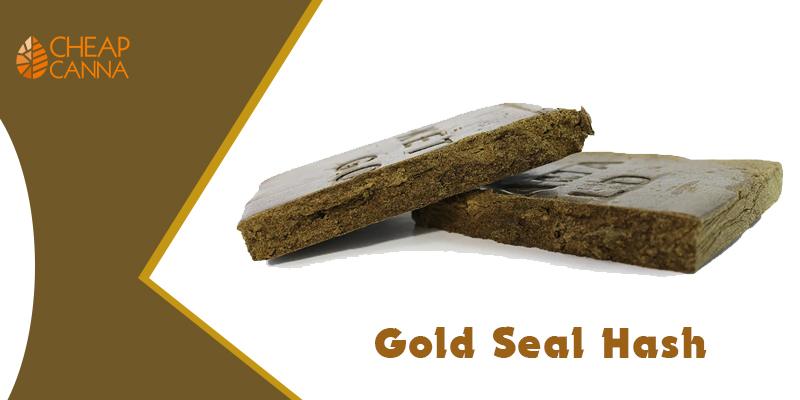Hash
Hash Types-101: How Many Variants Are There?
Hash started simple, yet over the years, it has evolved so much that there are multiple variants available in the market. From the hashish rubbed with hands all the way to completely commercialized extraction with carbon dioxide, hash has experienced its own global journey. Today, you can find several variants in the market that include popular names such as Afghani hash and Gold Seal hash.
Let us take a look at your options available and what they are! But, before you do that, let us take a look at what exactly hashish is.
What is hashish?
Hashish or hash is an extracted variant of cannabis trichomes that contain psychoactive compounds such as THC along with 100+ cannabinoids that include CBD, CBG, & CBN. There are multiple ways to create hash & some of the techniques mentioned below have been modified over 100s of years, while other techniques have come to light fairly recently.
So, here are some variants popular among hash lovers that involve different techniques to create the same.
Check our bestsellers!
1-Dry-Sieve Hashish:
A popular and well-known technique for the extraction of hash is via the dry-sieve method. In this particular technique, the fully-grown, properly harvested, & completely dried cannabis plant is rubbed or shaken over a mesh screen with very fine holes. This helps capture the powder-like, crystalline resin that falls from your cannabis plant.
Depending on how fine the sieve is, the quality of your hash can vary. A mesh screen that has wide gaps tends to produce a hash that belongs in the lower grade, given that there is a higher amount of unwanted plant material mixed into it. Apart from this, the intensity and length of the way you shake it will produce different results. In order to produce high-quality sieve hashish such as the ones found in varieties like Gold Seal hash or Afghani Hash, you need to shake the plant over a high-quality mesh screen for a minute or two.
This simply captures the ripest & highly-developed trichomes in one go. However, if you do shake it more, the filtered content would be infested with other plant matters that would eventually produce low-grade hash.
2-Hand-Rubbed Hashish:
Apart from the classic dry-sieve method, the most popular option is the hand-rubbing method to prepare hashish. This particular technique is used widely in countries such as Nepal, India, Afghanistan, & Pakistan. It is also popular in countries like Myanmar and Bhutan. In this particular method, the resin from the cannabis plant is collected typically from the living plants intact in the field.
Hash makers tend to spread their arms & run them through the mature cannabis fields. In this way, they catch the plant’s sticky resin in the skin to ensure later it can easily roll into the ball form, which is then left to be cured. However, if you want to opt for charas or the Indian version of hash, it might require several years of curing.
The hand-rubbed hash quality is vastly affected by the plant’s quality and the plant material that might sneak into the process—the time required for proper curing of the hashish matters a lot. During the curing process, fresh plants might contain a lot of moisture content that has to be removed throughout the curing stage.
3-Pure Cannabis Extraction:
Given that the extraction process for resin from the cannabis plant has improved spectacularly, the resulting hash is now exceptional in terms of potency and quality. These high-grade extracts are generally made with the use of solvents that include butane, alcohol, or just ice-cold water. In theory, the crystals have to be separated from the connection to create a high-quality hash. However, the dry-sieve/hand-rub technique might never achieve the purity level that is possible with the chemical or mechanical extraction process.
So, you can look for options such as Gold Seal hash or Afghani hash that is extracted via this method. With the solvent or water extraction process, you can isolate the crystals from the plant matter that is suspended in the solution before it is filtered through the fine mesh & eventually dried. It is then cured for a minimum of 3-4 weeks while ensuring that the water traces or solvent evaporates completely.
4-Bubble Hash or Water Extraction:
In the hash water extraction process, which is also known as the bubble hash process, you need to have in place multiple successively arranged mesh screens that are placed inside a bucket. The dried or fresh plant material needs to be placed into separate mesh-based bags that have larger screen sizes. Then the bag with cannabis is placed into the bucket and then filled with freezing water.
After this, the water needs to be agitated, freezing, & eventually, it will lead to the hardening of the crystals. This allows them to easily snap off & be suspended within the solution. Next, the mixture with cannabis is poured into the bucket that is lined with a bag. It is then passed through different types of small screens. This helps trap the large particles & residual material to ensure better hash quality.
Conclusion
Apart from this, there is the solvent extraction process that uses butane or alcohol to separate the crystals present in the plant material. So, make sure you choose your hash properly to get access to the best quality and its benefits accordingly. While some might choose to opt for the traditional methods, others stick to the modern ones. So, choose yours accordingly.
Call to Action
Are you looking for the best hash online from a reliable seller? Head over to Cheap Canna and place your order right away. Our hash collection has some of the most exquisite choices, along with high-quality testing standards. For all your orders above $99, you get access to a free gram of cannabis bud. To get more information about our products and shipping policies, you can write to us at [email protected].

